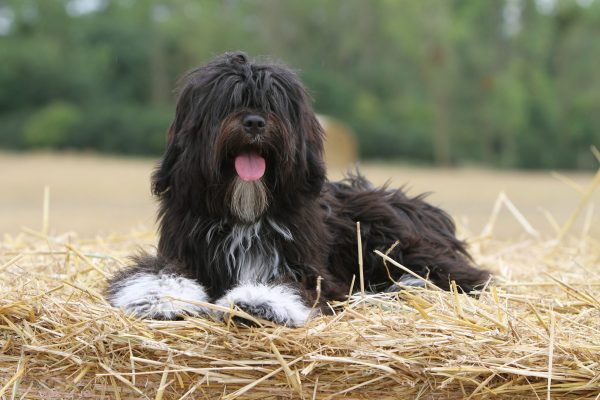
“Form follows function” is important in understanding why a breed is the way it is, but there are many breeds in which it is also crucial to be mindful of the conditions in which a breed developed. Climate and terrain have had as much impact on the conformation of many breeds as has the breed’s purpose, and a good example of this is the Tibetan Terrier.
Tibet’s extreme climate and difficult terrain shaped the evolution of the TT. In this post, we focus on the TT’s ample coat which served to protect the breed from the elements found in extreme altitude living. The Tibetan Terrier is certainly a coated breed, but articles on judging the breed in a show ring are quick to point out that the TT shouldn’t be considered a “coat breed” the way that, say, a Puli or Afghan Hound are. A double coat is essential to breed type, which is to say that a proper coat in the TT includes an undercoat that is wooly and soft, and a profuse outer coat which is not silky or fleecy, but fine textured.
An interesting aspect of the breed that we learned of through the Tibetan Terrier’s Illustrated Guide is the “half and half” coat in young adults. This is essentially a changing coat pattern that can occur in a maturing youngster when the adult coat comes in first over his or her shoulders, but that can take a year or more for the rest of the dog’s coat to develop the adult texture. Since puppy coats are softer, single, and shorter than an adult’s coat, “half and half” aptly describes this maturation process, and it should never be penalized in a show ring.
An adult’s outer coat may be wavy or straight, but the fact that the outer coat and undercoat are of different textures is important to remember because both were essential for insulating the dog from Tibet’s high altitude climate. It should go without saying (but probably should be occasionally mentioned to new owners with enthusiastic scissor hands) that sculpting, scissoring, stripping and/or shaving are regarded as serious faults in a breed that should be shown as naturally as possible. A Tibetan Terrier manicured like a canine topiary would not have fared well in the highest region on Earth.
Those interested in the Tibetan Terrier would enjoy reading this article by Gayle Nittler, “Cake or Frosting.”
Image: Tibetan Terrier by Dogs/Adobe Stock Photo
